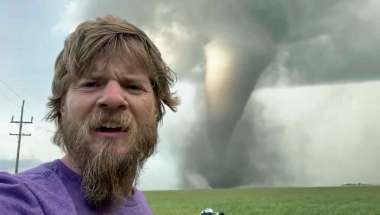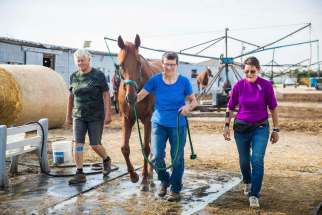Eyes of the storm Thrill of pursuit takes backseat to public safety for Manitoba storm chasers
Read this article for free:
or
Already have an account? Log in here »
To continue reading, please subscribe:
Monthly Digital Subscription
$0 for the first 4 weeks*
- Enjoy unlimited reading on winnipegfreepress.com
- Read the E-Edition, our digital replica newspaper
- Access News Break, our award-winning app
- Play interactive puzzles
*No charge for 4 weeks then price increases to the regular rate of $19.00 plus GST every four weeks. Offer available to new and qualified returning subscribers only. Cancel any time.
Monthly Digital Subscription
$4.75/week*
- Enjoy unlimited reading on winnipegfreepress.com
- Read the E-Edition, our digital replica newspaper
- Access News Break, our award-winning app
- Play interactive puzzles
*Billed as $19 plus GST every four weeks. Cancel any time.
To continue reading, please subscribe:
Add Free Press access to your Brandon Sun subscription for only an additional
$1 for the first 4 weeks*
*Your next subscription payment will increase by $1.00 and you will be charged $16.99 plus GST for four weeks. After four weeks, your payment will increase to $23.99 plus GST every four weeks.
Read unlimited articles for free today:
or
Already have an account? Log in here »
Hey there, time traveller!
This article was published 14/08/2020 (1948 days ago), so information in it may no longer be current.
In his 12 seasons as a storm chaser, Jordan Carruthers has seen many tornadoes. So many, in fact, they all kind of blur together in his memory.
But, for Carruthers, 28, and the other storm chasers who were out in the field on the evening of Aug. 7, the twister that touched down near Scarth, Man. will likely always stand out. Big, powerful and uncommonly photogenic, it’s a once-a-career kind of tornado — one that, tragically, ended up claiming the lives of two Melita teenagers.
“I hate to celebrate a tornado when it causes injury and death, but it was a textbook example of a tornado,” says Carruthers, who is based in Portage la Prairie. “It was just so perfect in its size and shape and the way it formed. So, we were celebrating during our livestream and calling it ‘beautiful’ and stuff, which was unfortunate in the end. From a storm chaser’s perspective, that was the epitome of a tornado. Every storm chaser wants to see a tornado that looks just like that.”
wfpsummary:
The weekend of Aug. 7 is one storm chasers Aaron Jayjack and Misheyla Iwasiuk won’t soon forget.
That Friday evening, they were the first on the scene of the fatal tornado in Scarth, Man., that killed a teenage couple and put another man in the hospital. On Sunday, they were welcoming their son into the world.
“It was a crazy weekend,” Jayjack, 39, says with a laugh.
“She’s pretty awesome, out there doing that at nine months pregnant and a few days later she’s giving birth,“ he says of his fiancée. “All I did was intercept a tornado — she intercepted a tornado and gave birth.”
:wfpsummary
The weekend of Aug. 7 is one storm chasers Aaron Jayjack and Misheyla Iwasiuk won’t soon forget.
That Friday evening, they were the first on the scene of the fatal tornado in Scarth, Man., that killed a teenage couple and put another man in the hospital. On Sunday, they were welcoming their son into the world.
“It was a crazy weekend,” Jayjack, 39, says with a laugh.
“She’s pretty awesome, out there doing that at nine months pregnant and a few days later she’s giving birth,“ he says of his fiancée. “All I did was intercept a tornado — she intercepted a tornado and gave birth.”
The couple, who is based in Boissevain, Man., met via Twitter almost two years ago; Iwasiuk is from Manitoba while Jayjack grew up in Indiana and was living in Texas. “Now, we’re engaged and we have a son together and we storm chase together,“ he says. “I’m in the process of trying to become a permanent resident here in Canada.”
They are well-suited to be partners in both life and chasing: both are calm in the face of a storm.
“I think we both have similar personalities; we both take a leadership role and want to make sure we can do everything we can,” Jayjack says.
That proved true on Aug. 7. The couple helped get warnings out, and were the first to arrive at the farmyard where they discovered James Blacksmith, pinned upside down in his Jeep. “I talked to him and tried to keep him calm because he said he had asthma,” Jayjack says. “Misheyla called 911.”
Their hearts are heavy with the loss of Carter Tilbury and Shayna Barnesky, both 18, of Melita.
“There’s a beautiful, mesmerizing side of nature, and then there’s the terrible, tragic dark side of nature,” Jayjack says. “Storm chasers want to see the beauty part obviously, and that’s what gets us out there, that passion. But when something tragic happens, that passion gets turned all the way off away from the beauty part and it becomes ‘what needs to be done here to help out the first responders.’ Once the first responders get there, we get out of the way, and that’s when the storm chaser’s story ends and we’re looking for the next storm.”
Which is why he was back out there on Wednesday, outside Estevan, Sask.
“I felt a duty to go out there because I know a lot of people are watching my Twitter account and there’s probably a lot of stress about storms coming by after this just happened, so I felt a duty to be those eyes in the field,” says Jayjack, who has been chasing storms since he was a kid on a bicycle in Indiana.
This time, though, he felt a pull in the opposite direction. “I just wanted to be back home with my family.”
— Jen Zoratti
No storm chaser wants to see destruction, injury or death. In fact, public safety is the No. 1 reason they log thousands of kilometres every summer pursuing these beautiful, terrifying beasts, even if the general public sometimes thinks, in Carruthers’ words, “that we’re just adrenaline junkies trying to get the action shot.”
Storm chasers have their eye on the sky but, perhaps more critically, they are the eyes on the ground. After the fact, their images and videos help meteorologists classify tornadoes on the Enhanced Fujita scale, which rates twisters from EF0 to EF5, with EF5 being the most intense. (The Scarth tornado has been preliminarily classified as a EF2.) But, in the moment, their reports from the field help Environment Canada and the National Weather Service in the U.S. issue tornado warnings to affected areas.
“Most of the time, Environment Canada or the National Weather Service, on radar, they can only see what’s happening in the top-half of the storm — they have no idea what’s happening underneath,” Carruthers explains. “So if there’s an area of rotation underneath that the storm doesn’t have enough precipitation to actually be visible on radar, storm chasers on the ground are able to call that information in so they can issue a warning as fast as possible. It gives the general public as much lead time as possible to get to safety.”
“Most of the time, Environment Canada or the National Weather Service, on radar, they can only see what’s happening in the top-half of the storm – they have no idea what’s happening underneath.” – Jordan Carruthers
Carruthers began storm chasing with his father when he was a teenager, but it was the F5 tornado that hit Elie, Man., in June 2007 that made him want to learn more about them. (Elie has the distinction of being both Canada’s first and last recorded F5 tornado; Environment Canada adopted the Enhanced Fujita scale in 2013.)
“I didn’t witness that one, but later on that day, my family and I drove out to Elie to check out the damage, and that’s when it hit me, how powerful things can actually be,” says Carruthers, who would have been around 15 at the time. “That was the tipping point for me. I really wanted to learn more about weather and tornadoes, how they occur, what makes them so powerful.”
And so, he threw himself into online and YouTube research and, later in 2007, created Manitoba Storm Chasers as a way to show his photos and videos. Now, Manitoba Storm Chasers leads tours, so people can experience storm chasing with professionals.
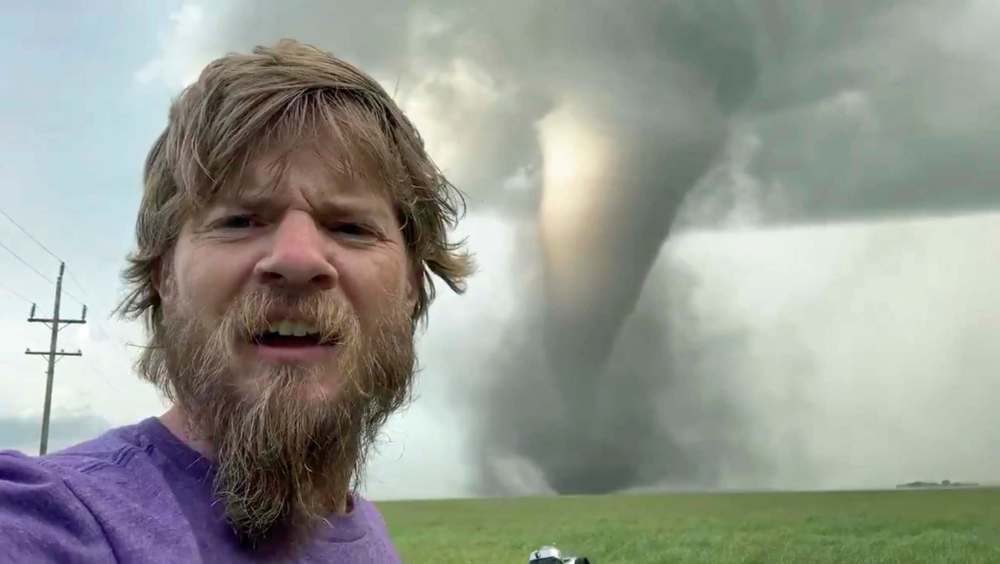
Photographer-turned-storm chaser Shannon Bileski’s first-ever tornado sighting happened to be the history-making Elie tornado.
She was on her way to Brandon for her niece’s third birthday party. “All of a sudden, it felt like a baseball hitting our windshield, and it was golf-ball sized hail. And then I asked my husband, ‘is that a funnel cloud?’ and he’s like, ‘No, it’s a funny cloud.’ And sure enough, within two minutes, it was on the ground, and we watched the entire Elie tornado from start to finish.”
Bileski, now 44, had joked to a friend just the week before that she’d pay $10,000 to see a real live tornado. “I find weather just fascinating,“ she says. “It’s a passion of mine.”
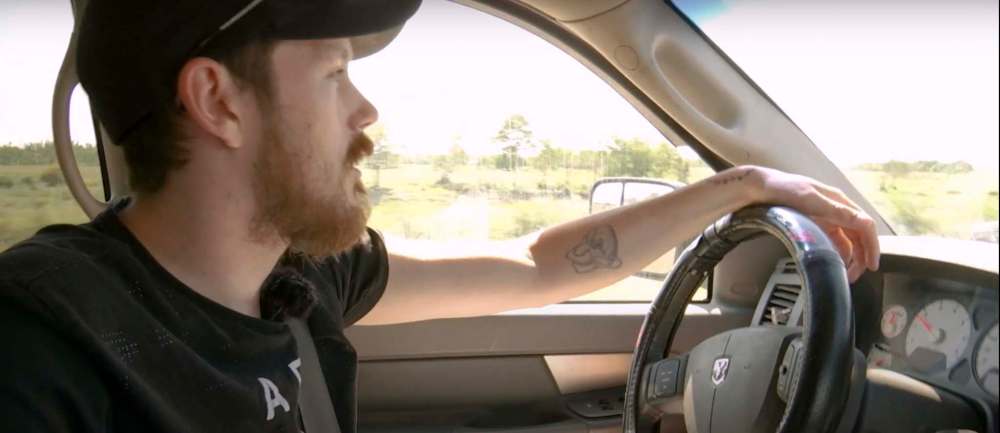
That passion led her first to photography — of lightning, in particular — and then to the University of Manitoba’s storm chasing course in 2011. “And yeah, I was hooked,” she says with a laugh.
Bileski says that while there are isolated cases that give storm chasers a bad name — especially in America’s Tornado Alley, where the competition to get photos and videos placed on news networks is particularly fierce — the people she’s personally chased with on both sides of the border are all about helping people out.
Indeed, storm chasing is not just about posting striking images to social media.
“The general public doesn’t see what we’re doing outside of our photos and videos,” Carruthers says. “After the (Scarth) tornado roped out, the first thing we did was go to that farmyard and start looking for injured people and victims. We’re fully trained and certified in emergency first aid and CPR, and we always carry first aid equipment with us for situations like that so we can help out while we’re waiting for emergency services to arrive.”
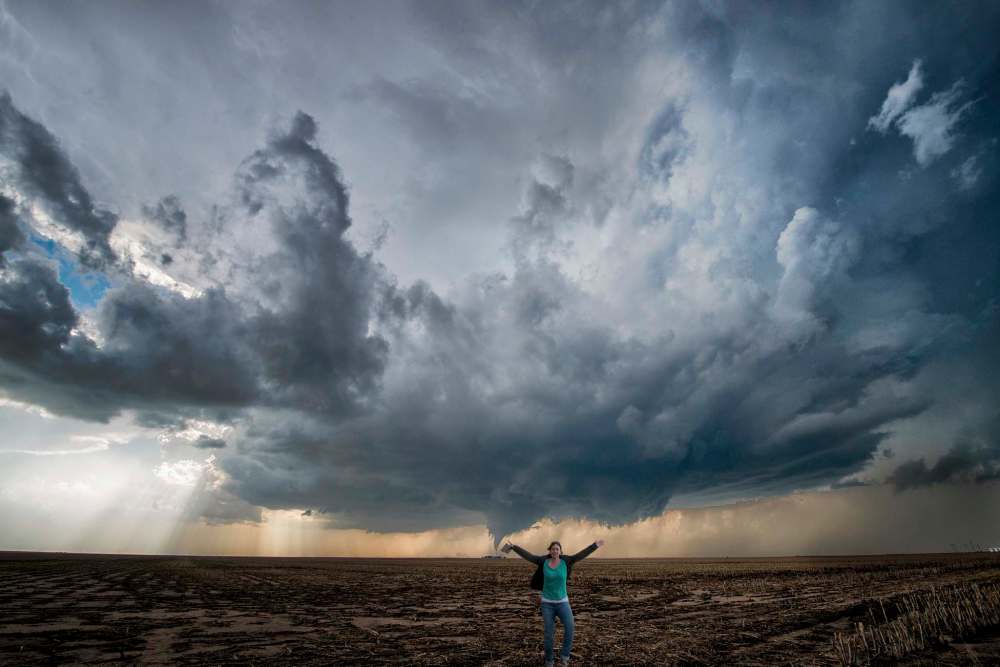
Like Carruthers, Bileski is also trained in first aid. She believes chasers have a responsibility to help where they can. “We have seen people who have gone through and taken pictures of the damage and not stopped to help people, and that’s sad and scary — if you’re out there, and you have some education on how to help people, it’s a matter of asking them if they’re OK and giving them a ride somewhere if needed.”
Educating the public on what to do if they encounter a tornado is also important since, as Bileski notes, people may get scared and panic. Pay attention to watches and warnings. Seek shelter in a sturdy building. If you see a tornado while driving on the highway, keep your distance. If you are really caught out in it, the best place for you is in the ditch with your head covered, so long as it’s deep enough and hail isn’t presenting another injury risk. If you absolutely must stay in the car, keep your seatbelt on, and protect your head. Parking under an underpass, while tempting, is a bad idea, Bileski says. “If there is a tornado, the wind underneath there can cause an increase in wind speed and it’ll likely rip you right out of there.”
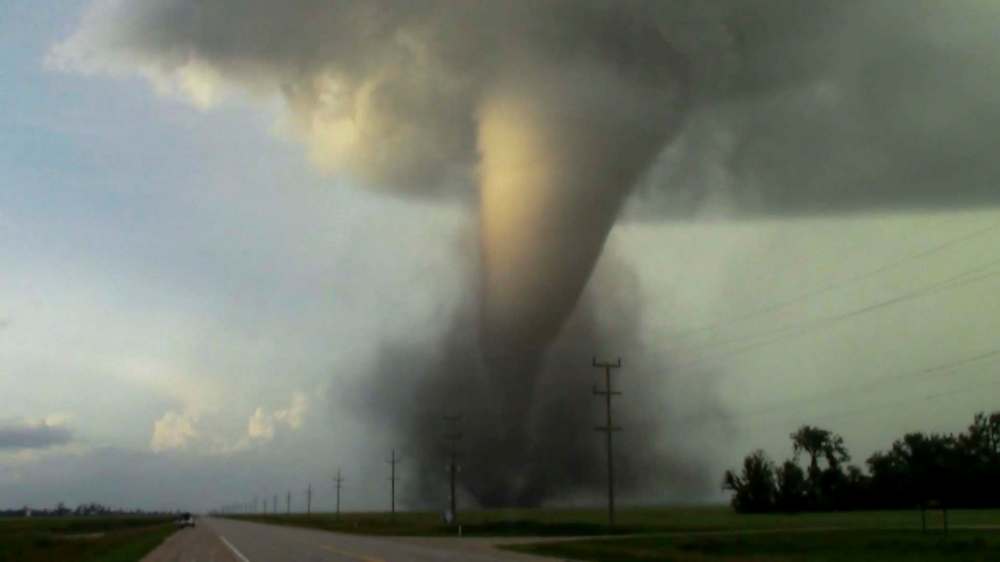
And trying to get photos and videos is dangerous if you don’t know what you’re doing. “Storm chasers have knowledge about what the storms are doing, which way they’re moving,” Bileski says. “They can anticipate when that storm turns, what it’s going to be doing. Where an amateur or someone in the general public who doesn’t know about weather, they don’t know that information.”
For Bileski, chasing isn’t about the rush. “I don’t get the adrenaline from chasing. I know a lot of people do and I get excited, but I don’t get the adrenaline,” she says. Rather, for her, it’s about seeing the skies in their glory — whether that’s lightning, a tornado, or northern lights — and how quickly the weather can change.
That’s what keeps Carruthers out there chasing, too.
“I would say, witnessing the sheer power that some of these storms have,” he says. “Watching a storm go from a puffball in the sky to a big supercell that’s producing a tornado within sometimes 20 minutes or half an hour, it’s mind-blowing to watch Mother Nature do her thing.”
jen.zoratti@freepress.mb.ca
Twitter: @JenZoratti
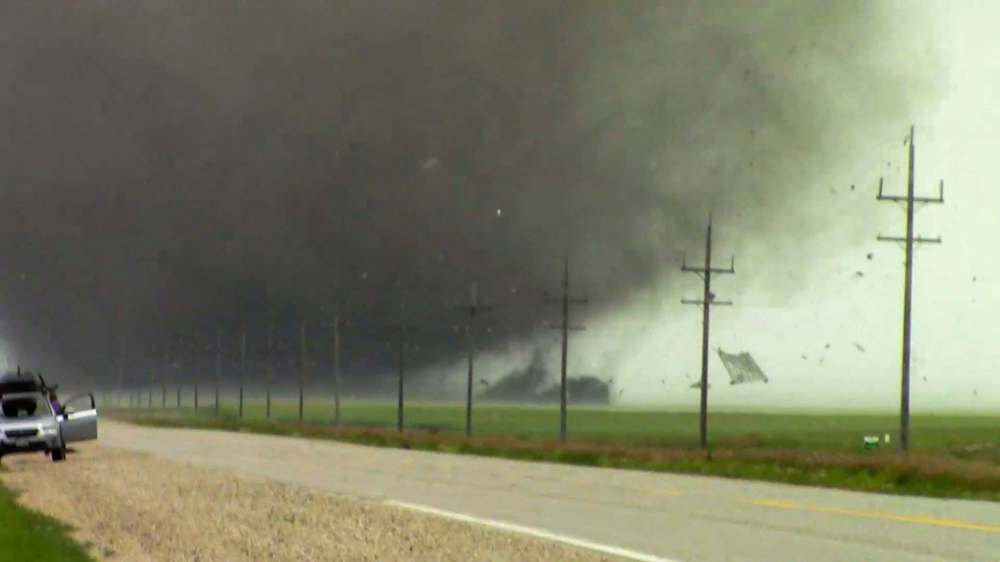

Jen Zoratti is a Winnipeg Free Press columnist and author of the newsletter, NEXT, a weekly look towards a post-pandemic future.
Our newsroom depends on a growing audience of readers to power our journalism. If you are not a paid reader, please consider becoming a subscriber.
Our newsroom depends on its audience of readers to power our journalism. Thank you for your support.








